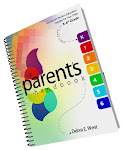Using Standard Technology to Enhance Learning: Part 2
Using Standard Technology to Enhance Learning: Part 2
By Lisa Wahl, M.A.
You probably know about assistive technology (AT) tools that can help students with learning disabilities (LD) with reading, writing, math, listening and organization. Perhaps you have purchased educational software for your child. However, you may not be aware of the extent to which the computer hardware and software you already own may include several features and functions that can improve your child's academic performance. In this article, we will explore how electronic text can be adapted to assist students with LD. The use of standard technologies to enhance and support reading can benefit students as young as third-graders, throughout their education, and into the working world. You and your child will want to experiment with the techniques described in this article to find those that help him most.
Changing the appearance of text
The key to changing the appearance of electronic text is to determine which modifications enhance readability for your child. Readability refers to a level of comfort and ease in recognizing letters and words that goes beyond mere legibility. Readability does not mean comprehension, but, by reducing the decoding load, it can increase reading comprehension for some students.
Font style and size
For a student who struggles with reading, you may want to experiment with different font (typeface) styles and sizes to find combinations that make reading electronic text easier for the child.
Research has revealed contradictory findings regarding the use of fonts for reading on the computer. One debate hinges on the use of font styles that contain serifs, which are the little horizontal lines at the tops and bottoms of characters or letters. (A "sans serif" font does not include serifs.) Some students find a serif font (such as Times Roman) easier to read on-screen because the serifs provide additional visual clues and eliminate confusion. Other surveys show more people prefer a sans serif font for reading on-screen text.2 Your child may prefer serif on paper and non-serif on the screen and may also prefer reading one size font on paper and a different size font on-screen.
Tip: Lexia is a free sans serif font that includes a non-symmetrical b and d (i.e., the b does not look like a backward d), and handwritten forms of a and g, which readers may recognize more easily.
Font color and background color
Font color or background color may be changed to enhance readability. Research indicates the preferred color combinations, both in print and on the Web, vary by the individual. Hill & Scharff (1997) found that while the majority of a large audience of Internet users preferred reading black text on a white or gray background, or blue text on a white background, some users reported that white on blue or red on white were clearest for them.
Your child may benefit from experimenting with different combinations.
Technology tips:
- Microsoft Word has an option (under Preferences>General) for changing contrast between the text and background. It provides a dark-blue background with white print. Once you've activated the blue background, you can select text and change the color. You might try the yellow or light yellow.
- Several free word processors allow a variety of background colors. TexEdit Plus is a free Macintosh word processor that has excellent speech. Jarte is a free word processor for Windows.










0 comments:
Post a Comment